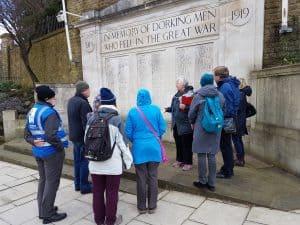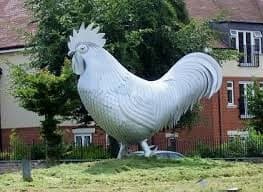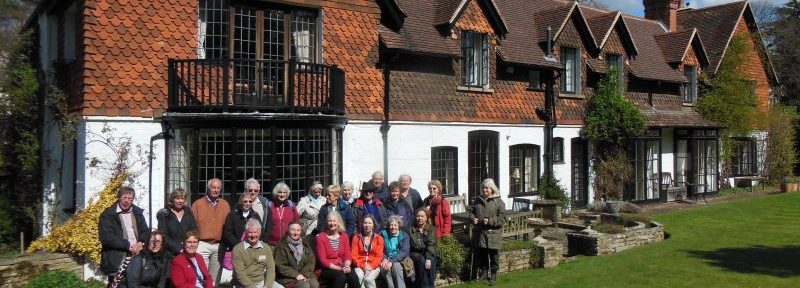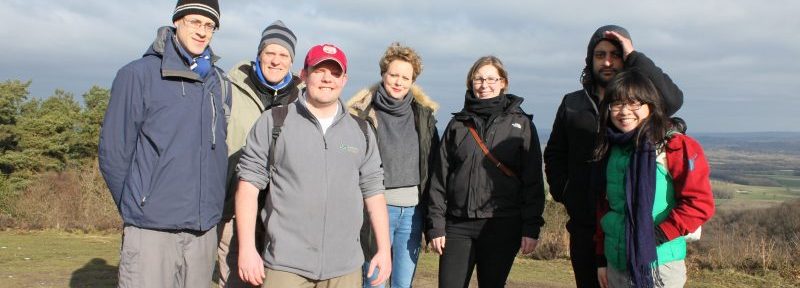I first became interested in English wines in the mid-1970’s when a couple of very warm summers helped producers to show what could be achieved. I remember examples from Hampshire, Sussex, Kent and even Essex but have no recollection of Surrey being represented. How things have changed! Surrey now has at least seven vineyards producing wine grapes and several more have been planted but are not yet in production. Denbies was probably the first and is certainly the largest. Others are Godstone, Greyfriars (Hogs Back), High Clandon (just entering production), Iron Railway (Merstham), Painshill (Cobham) and Wisley. Amongst the vineyards which have not yet started producing is Albury Organic Vineyard (by Silent Pool).
Developing a vineyard in Surrey requires a lot of faith and dedication. This is not because of the climate or geology – both of which can be checked out beforehand – but because of the capital investment and long lead time before a product is available to sell.
Having bought, leased or otherwise obtained the land, the soil needs to be prepared and planted with young vines. These days, this can be a high tech project. I recently watched a 4-5 hectare plot at Greyfriars vineyard being planted. A GPS beacon was set upon the corner of the plot – if the rows are too narrow or wiggly, then a tractor cannot get up and down them to work the vineyard and if they are too far apart, valuable land is wasted. A specialist vehicle, hired with it’s crew from Germany, was being driven up and down the slope using the GPS for exact positioning. On the rear of it, two people were feeding the young vines into equipment which dug the hole, planted the vine and backfilled as it went along. The expectation was that all of the 13,000 vines required for the plot would be planted within about a day! This is an enormous step forward from the traditional hand-planting approach which was so time consuming and labour intensive.
Posts and wires need to be erected along all the rows of vines to allow them to be trained and supported. Tying in of shoots, pruning, spraying, weeding and various other tasks keep the vineyard staff busy throughout the year. Then comes the winter. The vines need to be pruned back during their dormant season and are relatively hardy at this point. But once the sap begins to rise and shoots have started to show, frost becomes a major risk. Frost damage in the spring can knock back the new growth and decimate the potential crop. There are many techniques used to minimise frost damage but vineyard owners tend to have disturbed nights whenever there is a frost warning. Many vineyards can also suffer from animal and bird invasions which would destroy shoots, buds and grapes, so deterrents such as fencing, netting and bird scarers may all be needed to protect the crop.
The growing, pruning and vine management cycle continues for three years before the vines are old enough to produce grapes for a little bit of wine. This first crop is likely to be small but very eagerly awaited. The grapes will be picked and vinified and it is only the following spring that the vineyard owner gets a first taste of the still wine that has taken so much commitment to produce. Many of Surrey’s producers are aiming to make sparkling wine and these patient folks have to wait several years more to taste their first product since the process takes so much longer.
Some owners will have taken the major step of building their own vinification and bottling units whilst for others, third party contracts will be more cost effective. Either way, this is another significant overhead. Then there is labelling, storage, marketing and the inevitable vat on the product.
English wines are now winning significant numbers of awards and the best are winning internationally. Surrey is a natural home of sparkling wine due to the local geology and it is definitely true that the quality, complexity and finesse of these wines is comparable with many premium products from elsewhere. So when you buy your next bottle of Surrey wine, don’t consider that it is expensive compared to the mass produced products from some other parts of the world. What you are buying is a high quality local product with a flavour that encapsulates the Surrey land, climate and dedication of its producers. Go out and buy some today if you want to confirm this for yourself!
Ken Bare










